From a girl who loved Kimono, to a Kimono artisan.
Born in snowy Niigata, Sawada Maiko has loved kimono for as long as she can remember. Her grandmother was a skilled in kimono tailor, and her mother, a hairdresser who had also mastered kimono dressing. Ever since she was a girl she loved looking at kimono, and had always wished to wear one herself too.
After graduating from a local high school, she pursued a fine arts course at a junior college. She then transferred to Bunka Women's University in Tokyo, where in her third and fourth years, she studied silk screen printing. She was particularly intrigued by the stencil dyeing classes taught in the classroom next door.
Upon graduation, she returned home for and began attending a dyeing class she had always wanted to try in her local area. She found the class more enjoyable than she had imagined and quickly became deeply engrossed in it. Recognized for her rapid progress, her teacher introduced her to a stencil dyeing workshop in Kyoto, where she then worked as an artisan for over 20 years, later becoming independent in 2017. She continues to create work in her home/workshop in Kyoto today.
Working at a Kyoto dyeing workshop doing soley Saishiki for 20 years.
There were about 20 people employed at the workshop when Sawada joined. She spent her first months observing and learning the various proccess required in making stencil dyed kimono. Each staff member was assigned one role of the process, and focused on that and that alone. Sawada enventually was assigned to do Saishiki. Saishiki is the technique where the color is hand applied to the fabric after the resist paste. Sawada spent 20 years doing only this job, honing her skills as an artisan but also cementing her sense of color. During breaktimes, the staff would teach eachother their unique skills involved in various proccesses required to make a stencil dyed garment. Sawada worked full time Monday to Friday, and spend her after work evening hours and the weekend producing her own work.

In 2015, Sawada Maiko won the grand prize in an award presented by famous kimono magazine Kimono Salon in partnership with Ginza Motoji . This served as a catalyst for her to launch her career as a solo artist.
Aditionally, her work Nagtsugasumi (Summer Haze) was selected to be displayed in the 51st Japan Traditional Crafts Exhibition.
It's uncommon to embark on the path of an independant artist directly from a workshop, rather than through apprenticeship. Her solid foundation of 20 years as a craftsperson has taught her much, allowing her to develop precise technique and a refined sense of color.
At her home studio, she ingeniously utilizes limited space to integrate living and her craft under one roof. In front of the kitchen, a massive 5 meter board used for pasting nori (resist dye) takes the place of a dining table, supported by bookshelves used to store her tools of the trade.

When doing saishiki, Sawada uses a handmade frame. The frame is a device similar to a conveyor belt that connects and stretches the fabric at both ends.
The fabric can be rotated smoothly, allowing her to add color while seated. It is made to fit the lenght of an obi perfectly.

When she is dyeing a kimono, the frame is not big enough, so she extends the fabric all they way to a window, taking up most of the room.

For dyeing the ground color and drying the fabric, she stretches the bolt of material across the room to door and window frames, fully utilizing the space. Sometimes there are up to four or five pieces being worked on at once, making moving around her own home challenging.
Patterns developed from a love of nature.
Sawadas work is a connection of her two passions; That of making, and her love of nature.
The changing seasons and their flowers and plants are a hugely important motif for her, and her work.

She says that gatering materials to aid her design process is of the utmost importance. Often visiting the nearby prefectural botanical garden in Kyoto (she even has an anual pass) to sketch on-site and take various photos for composing drawings at home. During spring, when many plants begin to sprout, and flowers bloom, she can be quite busy and finds herself visiting the gardens as much as twice a week. Sawada also exchanges information about flower blooming times with friends on social media to collect materials during the peak seasons. Even her home features a beautiful garden, with deep red camelia and bountiful plumblossom which inspire her work too.
Platinum Boy Kataezome Kyusun Nagoya Obi「Plum」
Were I grew up, the plumblossoms bloomed when there was still a heavy blanket of snow. I always thought the contrast was so beautiful.
*Note the unpatterned part at the bottom of the obi. This is called the tare. In stencil dyed kimono it can be patterend, or just a solid color.
Stencil cutting is her favorite part of the proccess.
Sawada says that cutting the stencils is her favorite part of the proccess. To make things more time efficient, she even devised up a double bladed cutter which she makes herself.
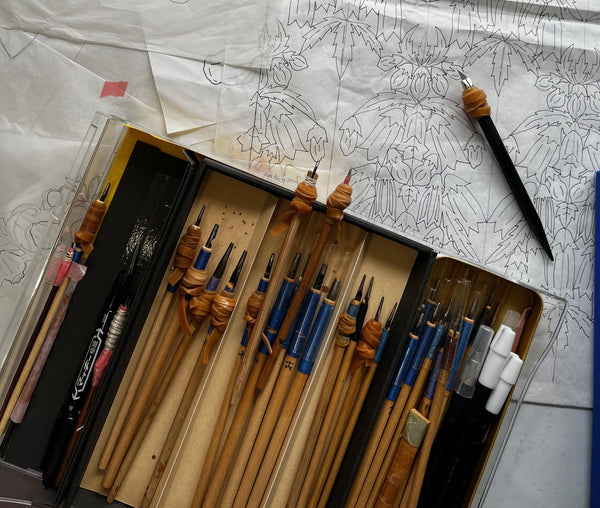
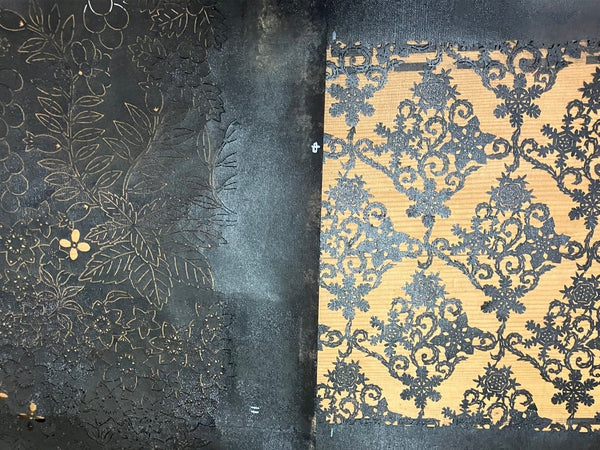
It usually takes about two days just to cut out one stencil. Sawada has a collection of about 150 stencils she had cut over the years.
They are carefully stored in cardboard envelopes to ensure they dont bend or rip. She even has a catalogue doccumenting each stencil making it easy to find each one.
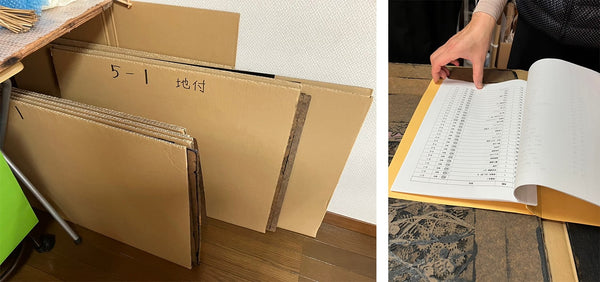
Norioki
Placing the resist paste, or Norioki is the next step. This is the most nerveracking of all the processes.
This process must be done quickly as the Nori (the resite paste), will get lumpy and not spread.
The Nori is made from rice and rice bran, and a blue dye to make it visible. This will be washed away at a later stage.
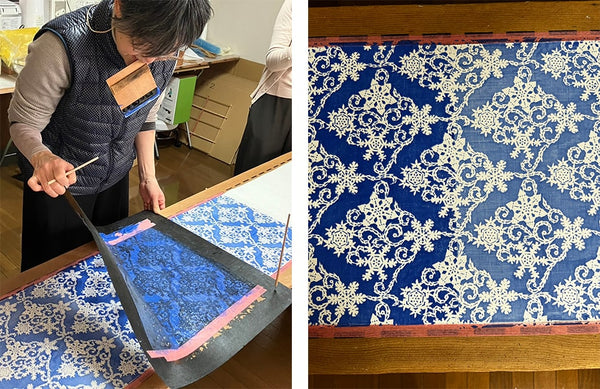
The stencil is placed on the fabric and the nori is applied. Usually this proccess is usually just done once, but Sawada does it three times, producing a thick layer of nori. This ensures sharp lines, and colors which will not run.
When dying an obi, sometimes she leaves space with no nori, to dye it a solid color. This is for obi with a solid color tare.
The biggest challange is to ensure that the nori doesnt dry out. Depending on the season, the temperature and humidity is completely different, espcially in Kyoto. If the Nori cracks, colors will end up in places they should not.
The brightest colours first.
She begins with the brightest color, delicately painting them by hand. The surrounding colors are added after, one by one to ensure balance. The dyes used are acid dyes, which she buys in powder form and mixes herself.

One of the most outstanding things about Sawadas work is the lively and vivacious colors she uses. Just by wearing one of her works, you can feel the warmth, brightness, and femininity.

"I want to make the wearers of my work happy"
Sawada expresses, 'The greatest joy comes from seeing customers delighted with what I create. There's a red thread connecting my creations with the customers, and I'm here to assist in that connection.'
Driven by her love for kimono, her craftsmanship is rooted in the perspective of the wearer, uplifting their spirits and bringing out the loveliness of adult women.
Handling every step from design, cutting, pasting, coloring, to dyeing the fabric herself, she presents a collection of vibrant pieces honed over 20 years as an artisan, showcasing her impeccable craftsmanship and sense of color.
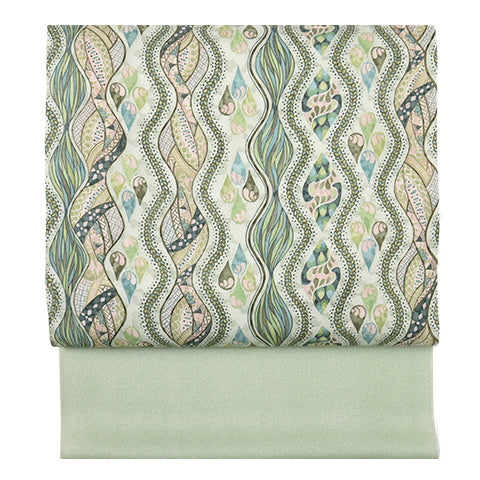 名古屋帯
名古屋帯
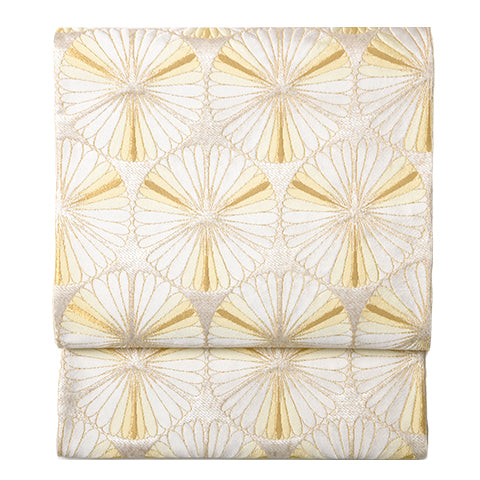 袋帯
袋帯
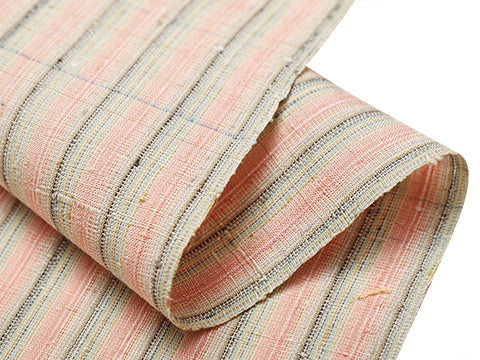 紬・綿・自然布
紬・綿・自然布
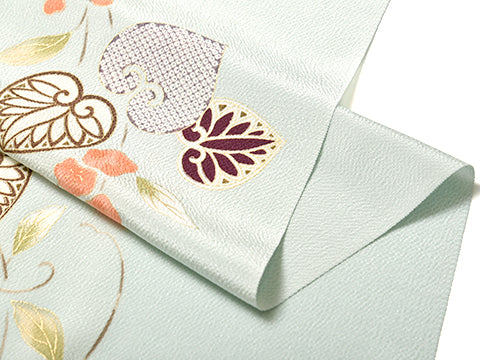 小紋・江戸小紋
小紋・江戸小紋
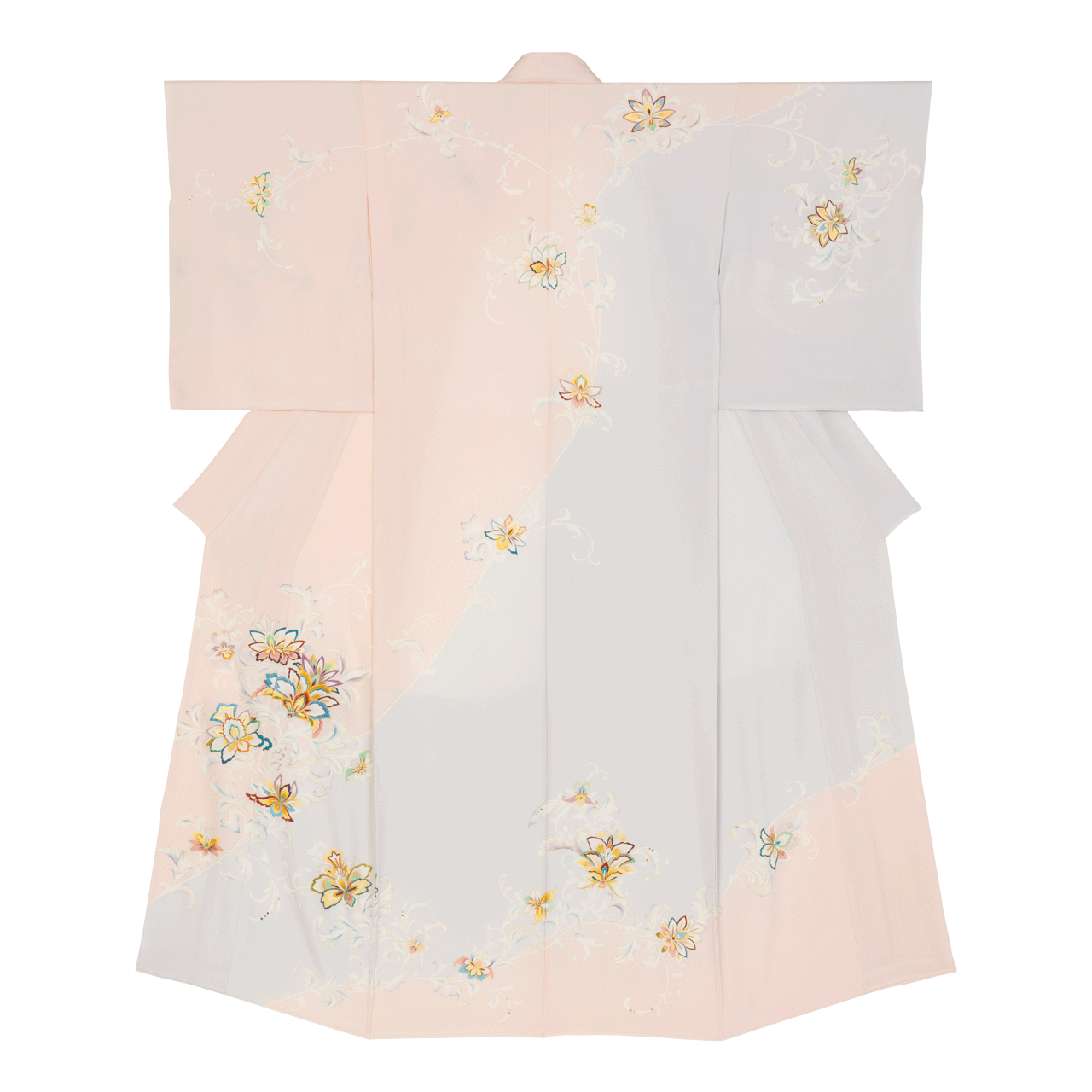 訪問着・付下げ・色無地ほか
訪問着・付下げ・色無地ほか
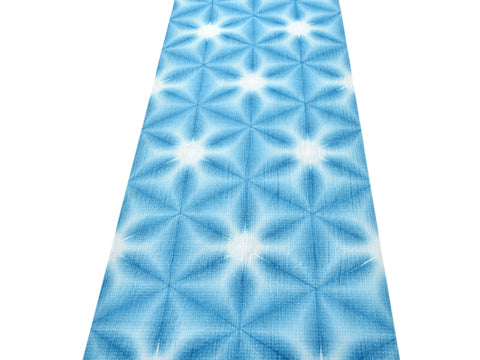 浴衣・半巾帯
浴衣・半巾帯
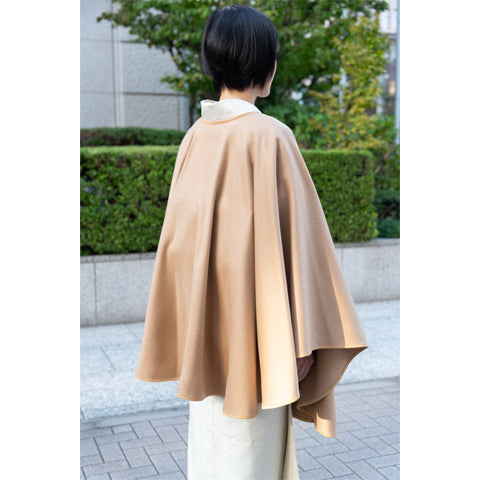 羽織・コート
羽織・コート
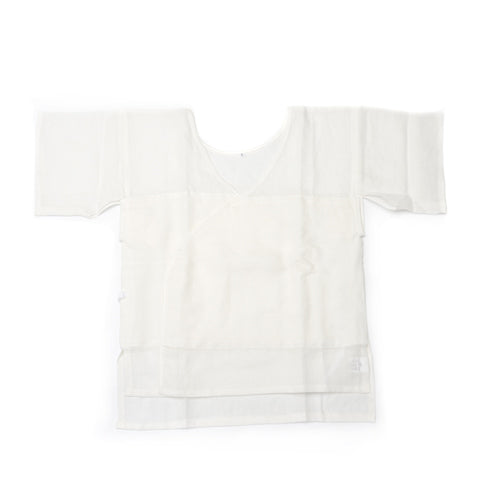 肌着
肌着
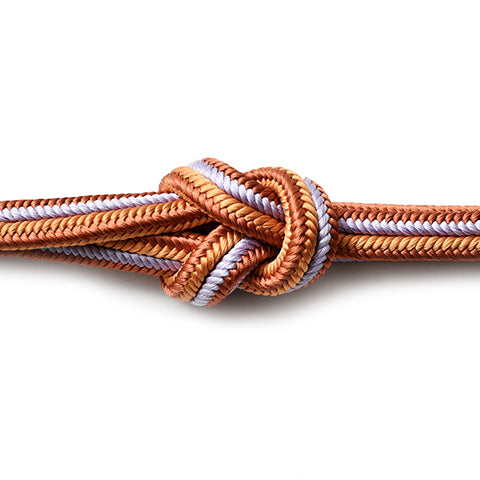 小物
小物
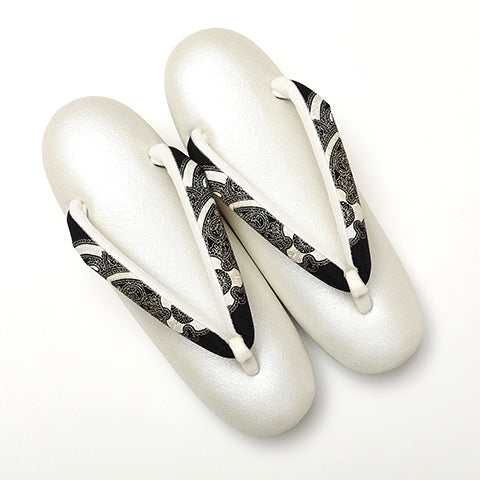 履物
履物
 書籍
書籍
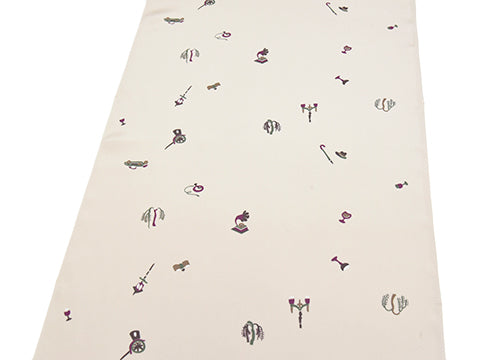 長襦袢
長襦袢
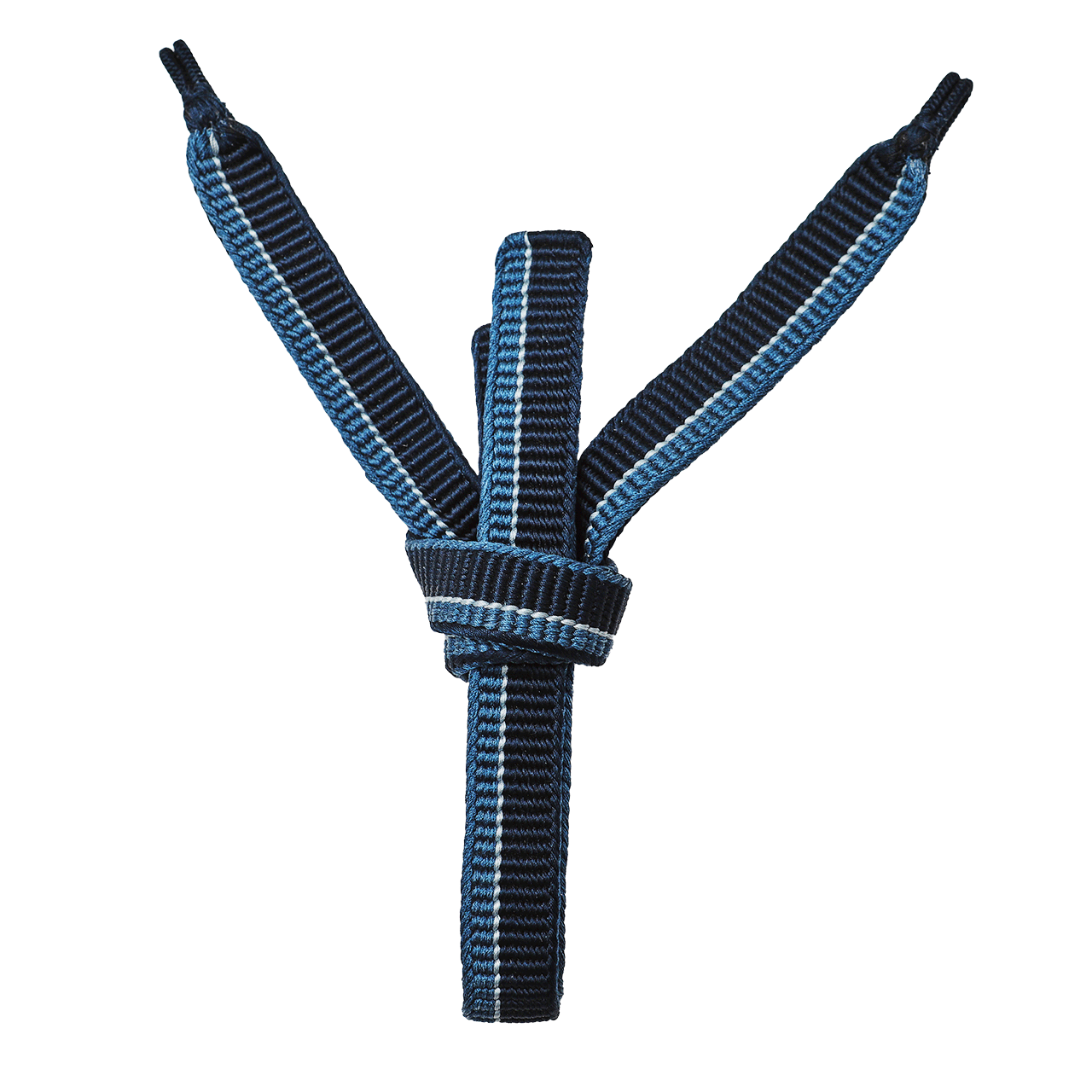 小物
小物
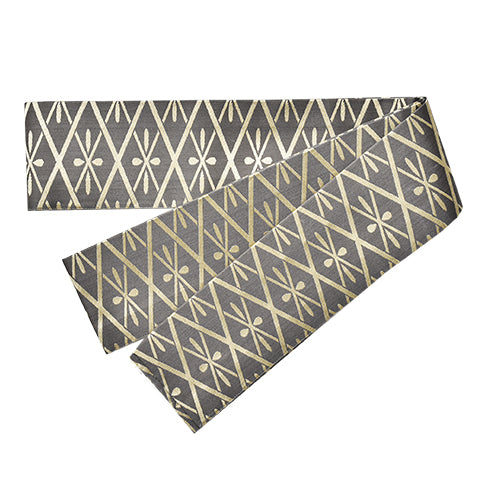 帯
帯
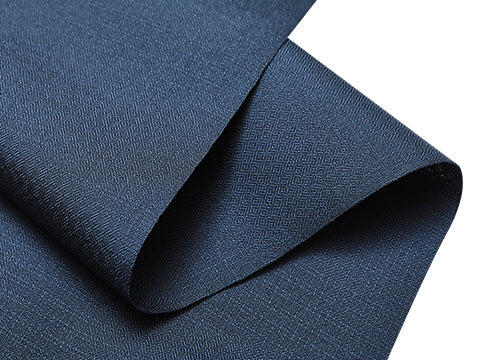 お召
お召
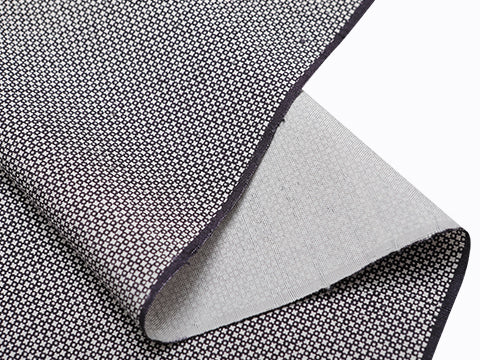 小紋・江戸小紋
小紋・江戸小紋
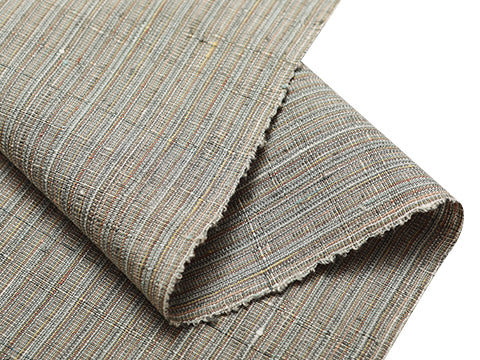 紬・綿・自然布
紬・綿・自然布
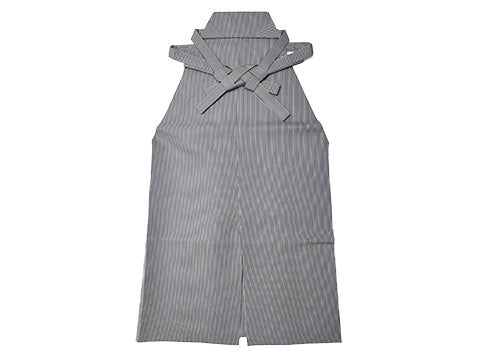 袴
袴
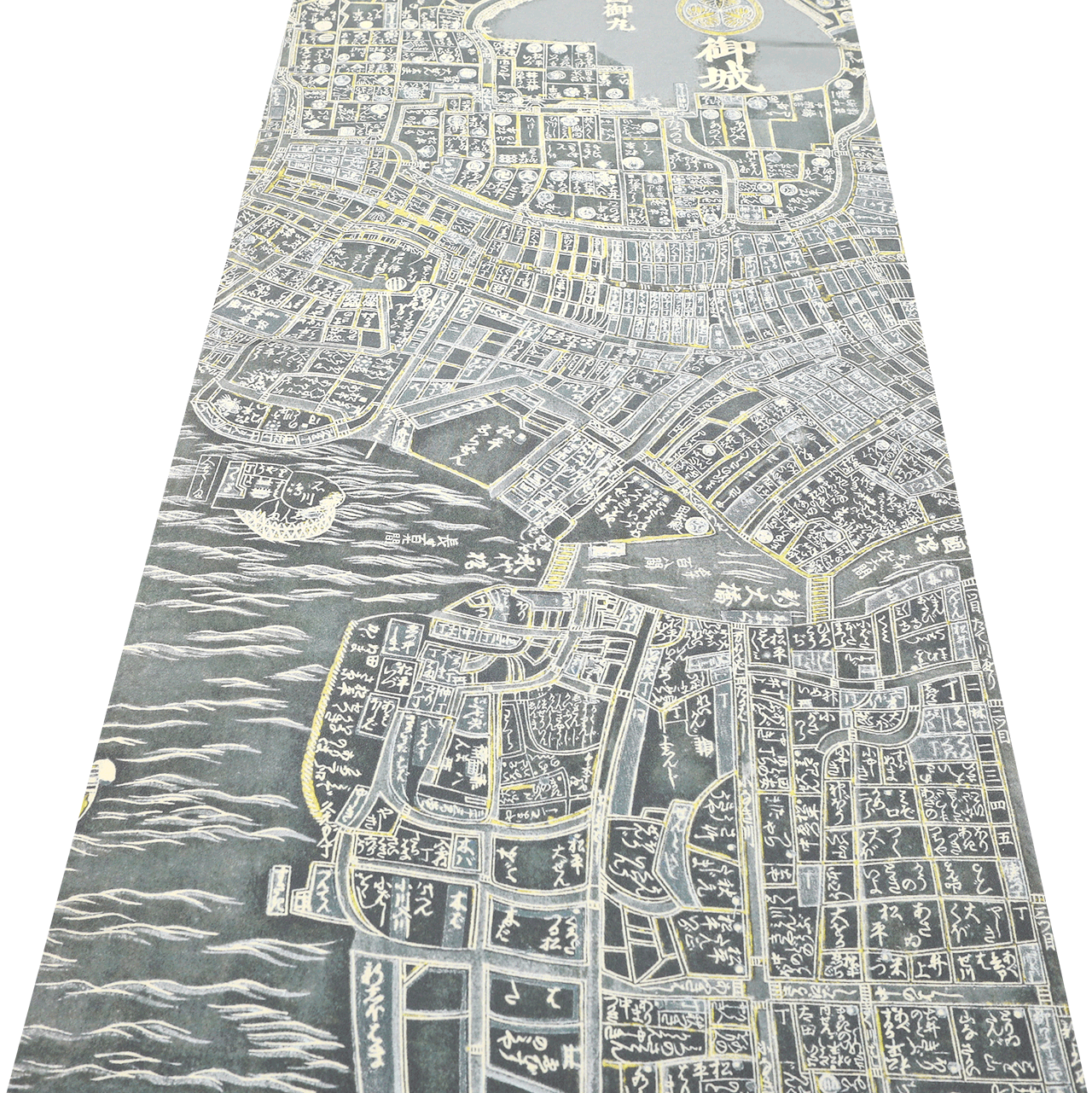 長襦袢
長襦袢
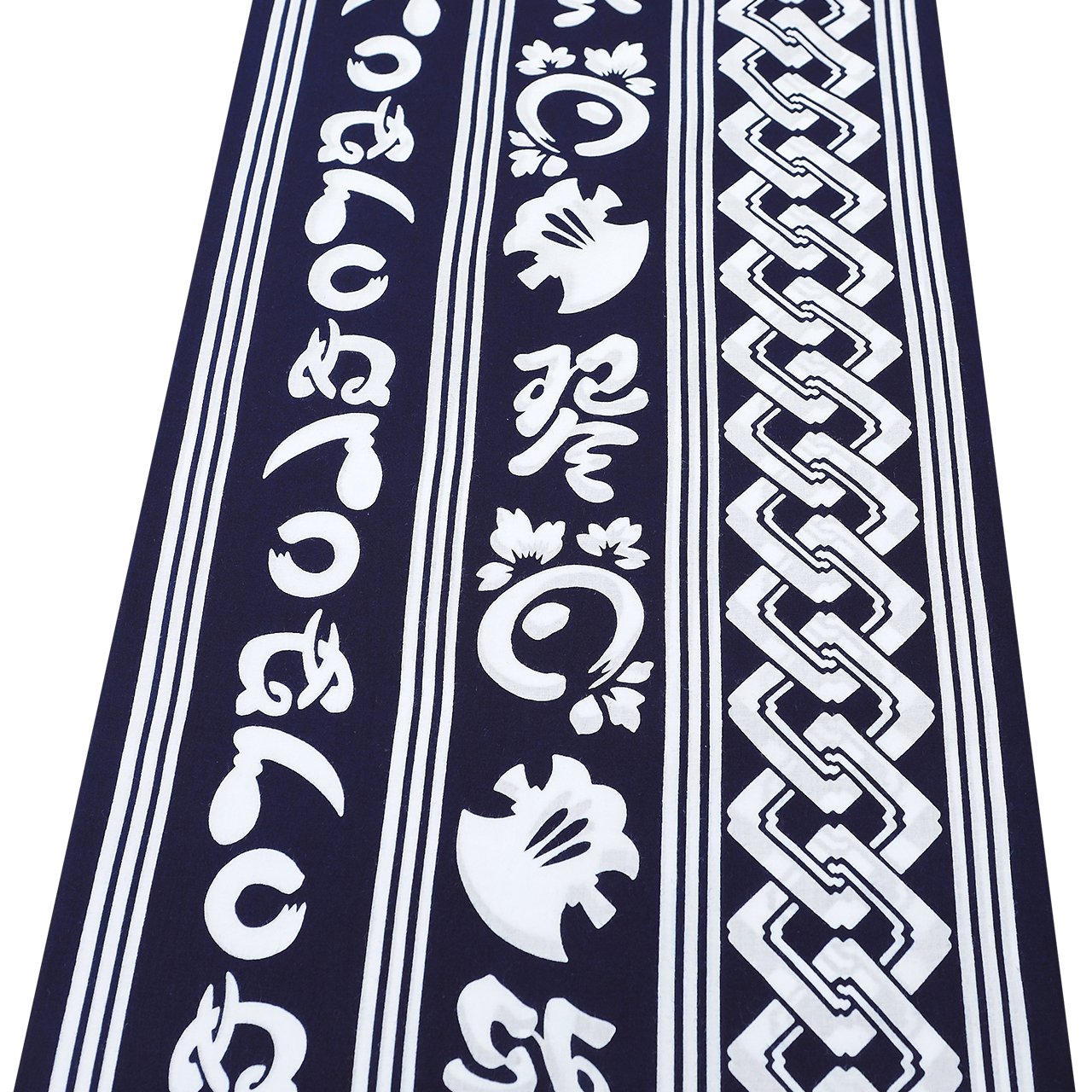 浴衣
浴衣
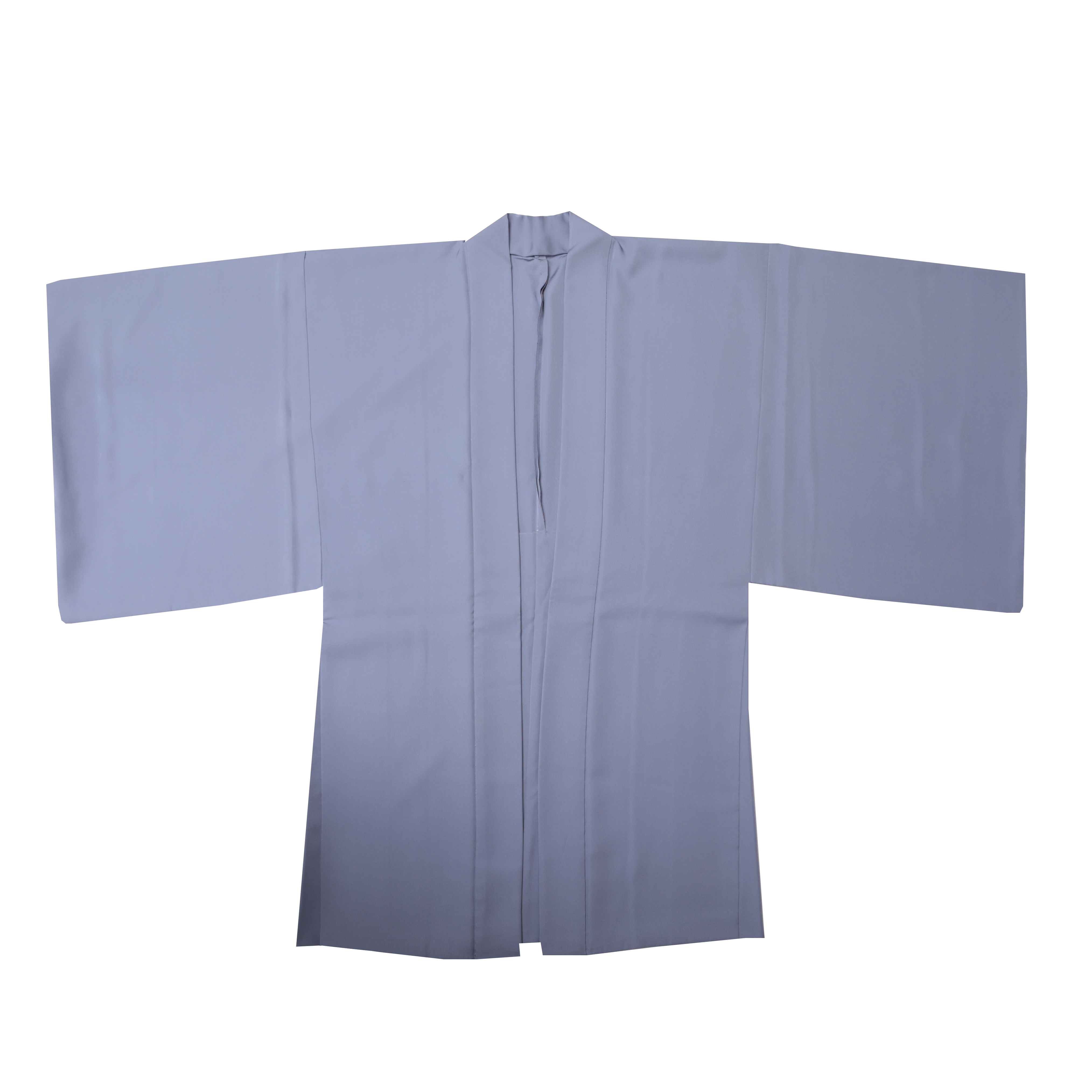 羽織・コート
羽織・コート
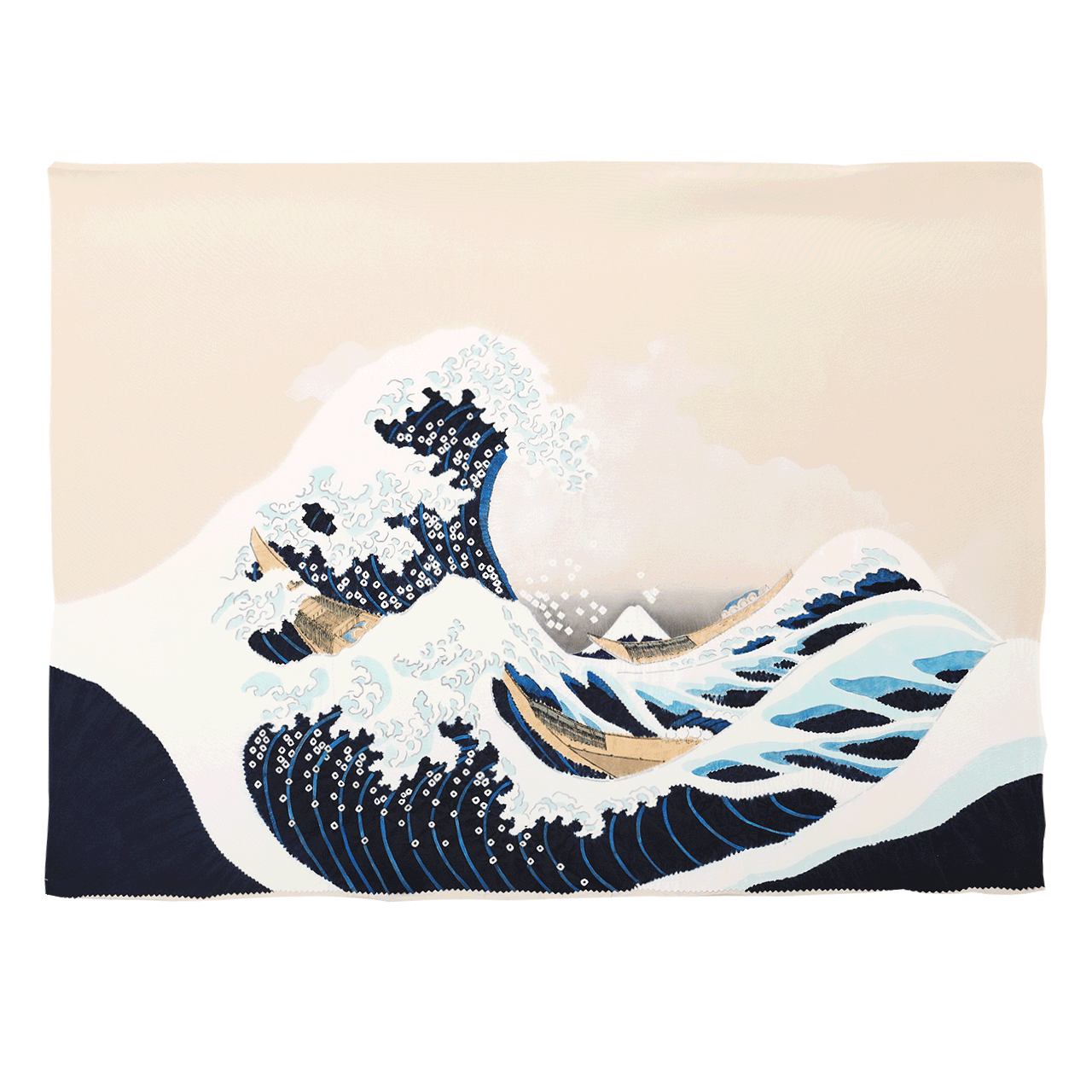 額裏
額裏
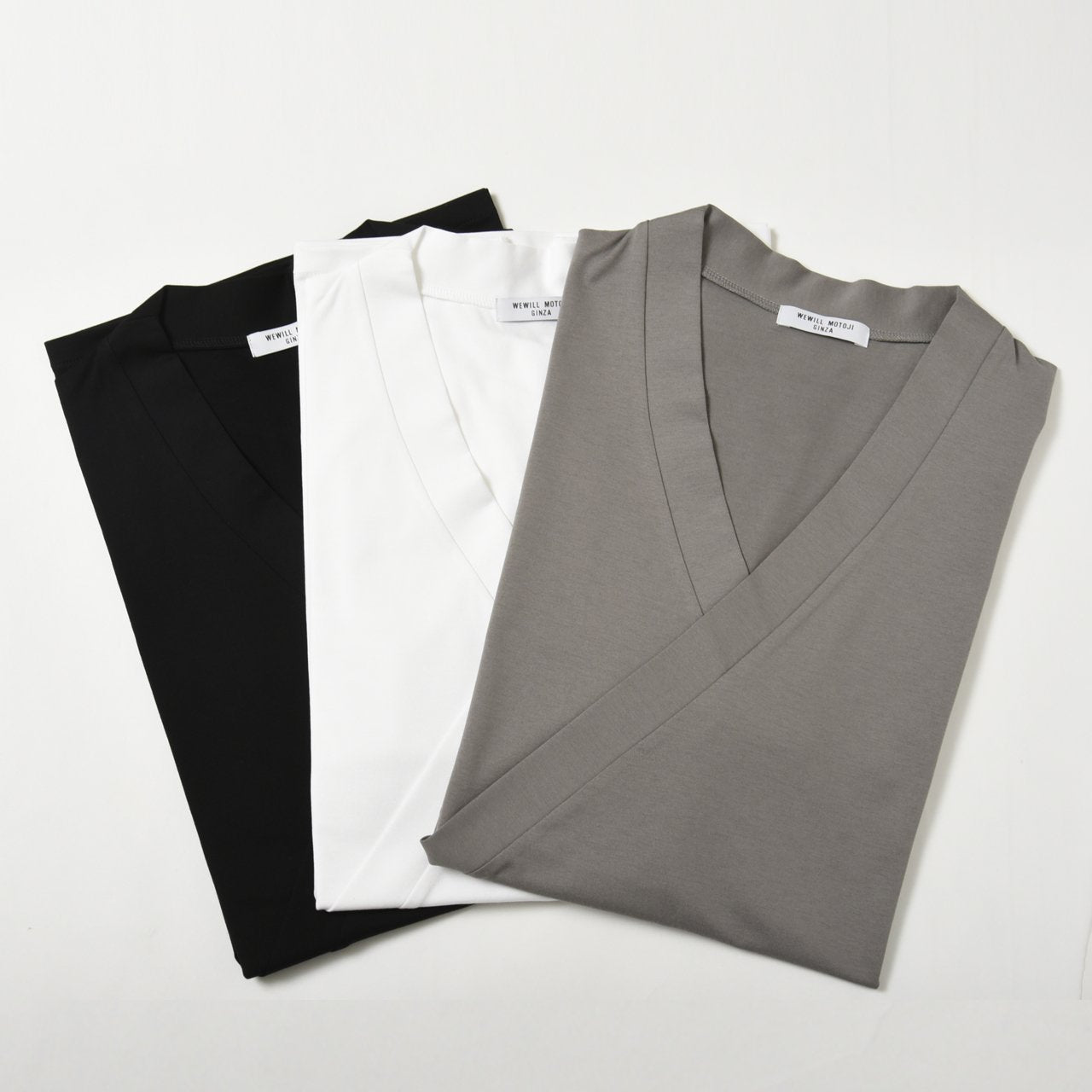 肌着
肌着
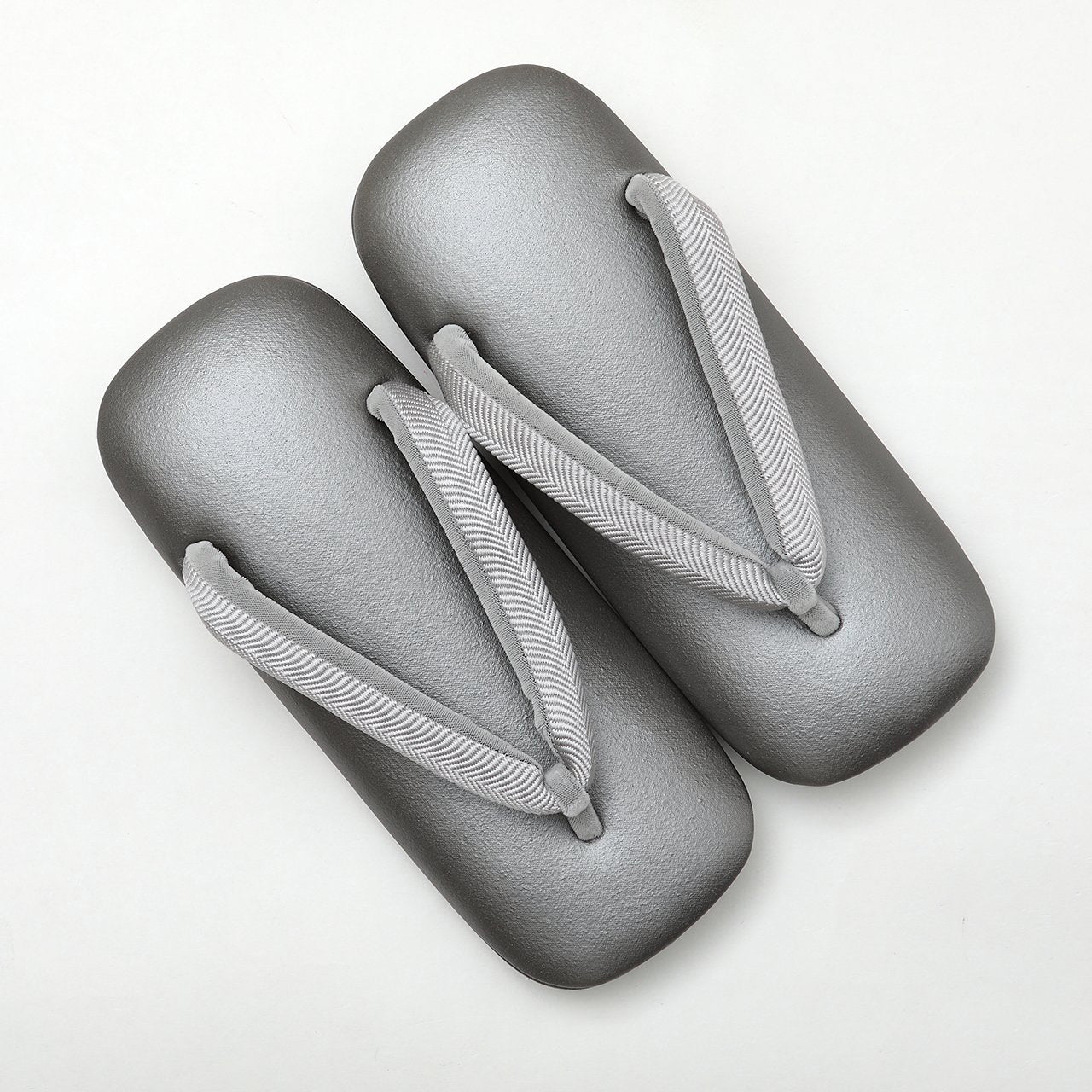 履物
履物
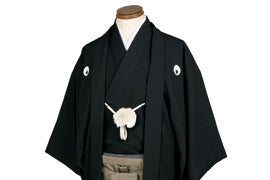 紋付
紋付
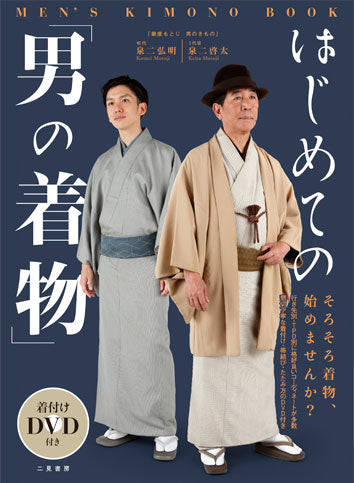 書籍
書籍

